Europe has made a big step in putting one foot on the ground with the EIT Culture & Creativity, not just because of the financial size of the program, but mainly because it is the most ambitious attempt to date to create a full-fledged ecosystem for culture and creativity.
The creation of the Policy Club, meant as a peer-to-peer learning and co-creation community of policy makers, aims at understanding on how to innovate, how to go beyond established mindsets, and ultimately how to unleash the potential of culture on many different dimensions and from various unexpected angles. One main goals of the peer learning community of policy makers is then creating the synergies enabled by collective intelligence, so that policy makers are not only representatives of cities and regions but vital units of a new community of practice.
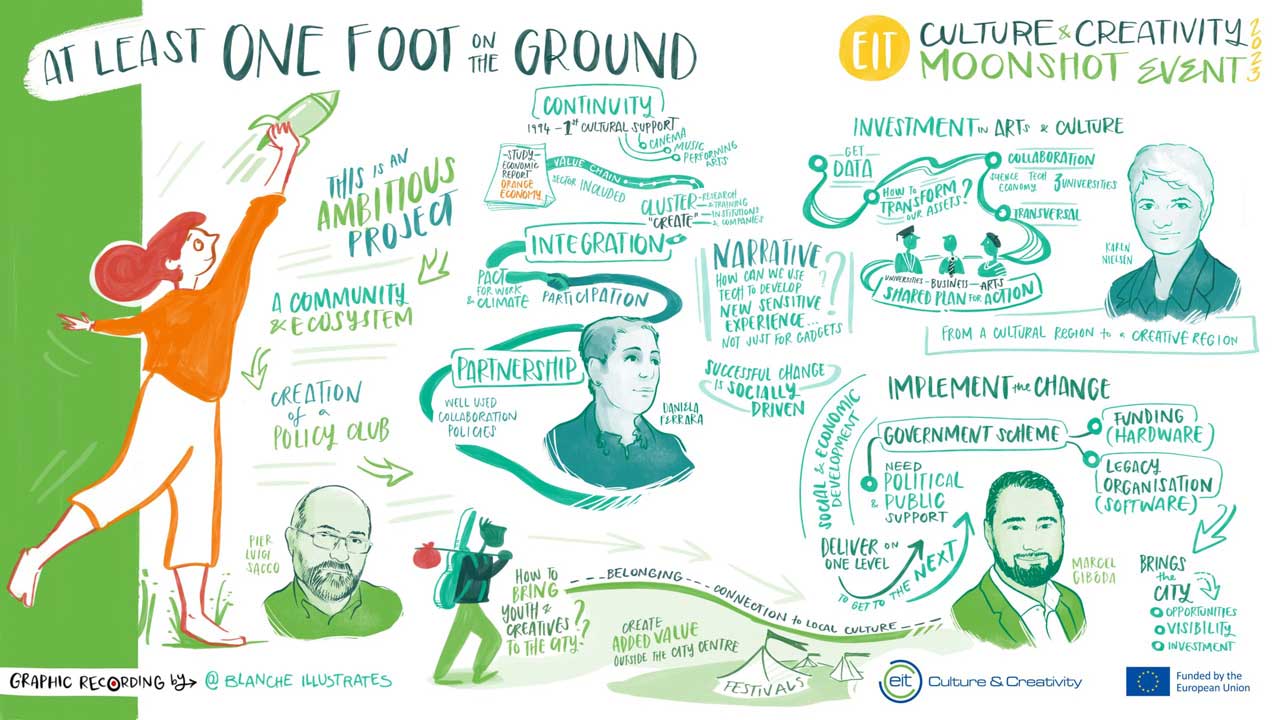
The experiences presented in this panel offer us three concrete cases of successful culture-led development. The first one regards Košice in Slovakia, an European Capital of Culture (ECoC) in 2013 and surely one of the most successful editions in the whole program. Marcel Gibóda, Deputy Major of the City, stressed the importance of multiple competences when it comes to push policy choices forward. The many challenges of the ECoC year were faced boldly but also harmonically, combining initiative at the local and national levels to gain traction and political support, and reshaping policy visions with the help of the whole local community. Government funds and support have been employed also for the creation of a lasting cultural infrastructure that can be seen as the hardware of the new ecosystem. The software can instead be traced back to the legacy organization of the ECoC, Creative Industries Košice. The new organization has provided a crucial contribution for the local cultural industries to grow, reach momentum, and recruit local energies at all levels: creative, social, and administrative. In this way, a complex value chain was established for the sustainability of the sector, where culture and creativity attract talent and resources and foster wider-ranging cooperation at the local level. As a result, in 2019 a new Plan for Economic and Social Development of the city was released, and a cultural plan was approved by the city council to flesh out the new development strategy for the creative industries. The Plan builds upon Cultural and Creative Sectors and Industries (CCSI) as a key level of the local economy and highlights the power of creativity also as a crucial factor for the scaling up of the policy impulse.
Karen Nielsen, Deputy Head of the Department of Arts and Culture, Region Provence-Alpes-Côte d’Azur (France) presented the experience of the Côte d’Azur which became a global hub for science and technology, stressing how synergies among culture, science and technology can also be a smart growth strategy. The innovation in the arts and culture sector has a long story in the Region, and the first step to develop it was to get data about the creative sector commissioning a study which stated that the creative industry is a leading sector almost at the same level as the local harbour economy.
Secondly, the Region wants to transform its rich cultural history into a creative future building upon the already existing assets, such as the festivals that attract about 2.5 billion people a year. It was clear that such a complex set of goals could not be in charge of a single entity. The Economic, the Science and Technology, and the Higher Education departments of three universities of the territory (Université Cote d’Azur, Aix-Marseille and Avignon) were involved in the creation of the Mediterranean Foundation for Cultural and Creative Industries (MIN4CI) to work with a cross-sectoral approach to public policies. The Foundation is a legal partner which is now part of EIT Culture & Creativity and aims at scaling up the policy instruments to help the creative sector to develop.
The role of institutional facilitation is crucial for the implementation, allowing the emergence of a shared vision and most importantly of a shared plan for action, as the contamination of arts, science and technology is a natural evolution of the process that strategically focused on innovation, in the first place, and then on coordinating such areas in an increasingly complementary way.
Daniela Ferrara, Head of the EU and National Funds Department of the Emilia Romagna Region (Italy), stressed how in the Region culture plays an extremely active role in the wider context of the welfare model. Three aspects are relevant to represent the policy of Emilia Romagna in terms of social cohesion and culture: continuity in the policy; integration in terms of fund and policies; partnership and participation.
The continuity of the policy and its support started in 1994 when the first regional law for culture was released, setting the legal framework for the sector to be recognized. The Orange Economy Report, meant to give an overview of the creative sector composition by exploring different aspects, showed its relevance both in terms of number of employees and for social cohesion, also gaining a recognition as one of the most promising sectors in terms of future growth potential. This laid the premises for the inclusion of the CCSI in the Smart Specialization Strategy of Emilia Romagna. The peculiar nature of cultural production also allowed a cross-funding system both from the regional cultural and social funds. Most recently, the Clust-ER on Cultural and Creative Industries was created. It is an association of companies, research centers, and training institutions that meet in an open innovation logic to strengthen the regional production system by focusing on the integration of technology, creativity, and culture.
These examples show how European cities and regions are learning to aim high while maintaining a concrete focus upon securing viability and sustainability of their culture-led development strategies. This is the solid basis on which the Policy Club will be built.
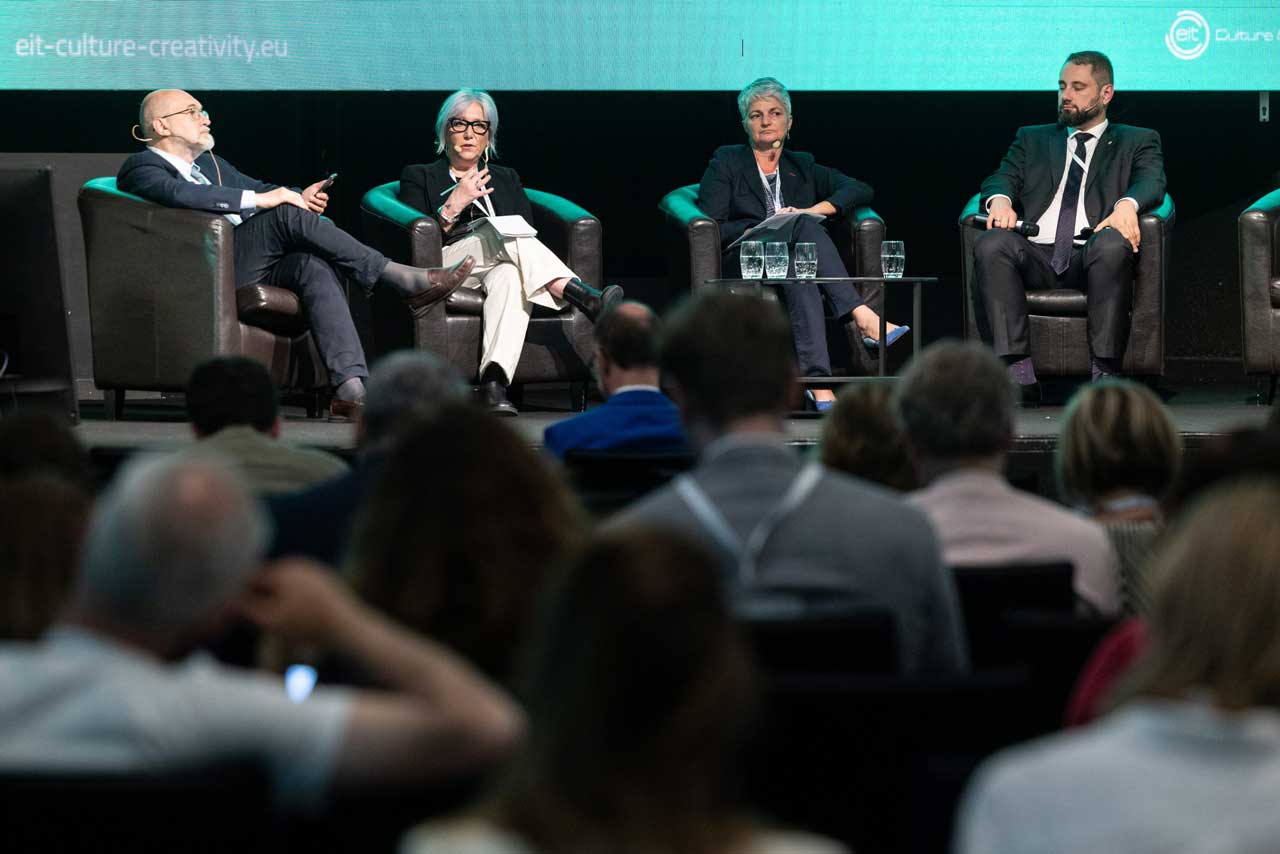
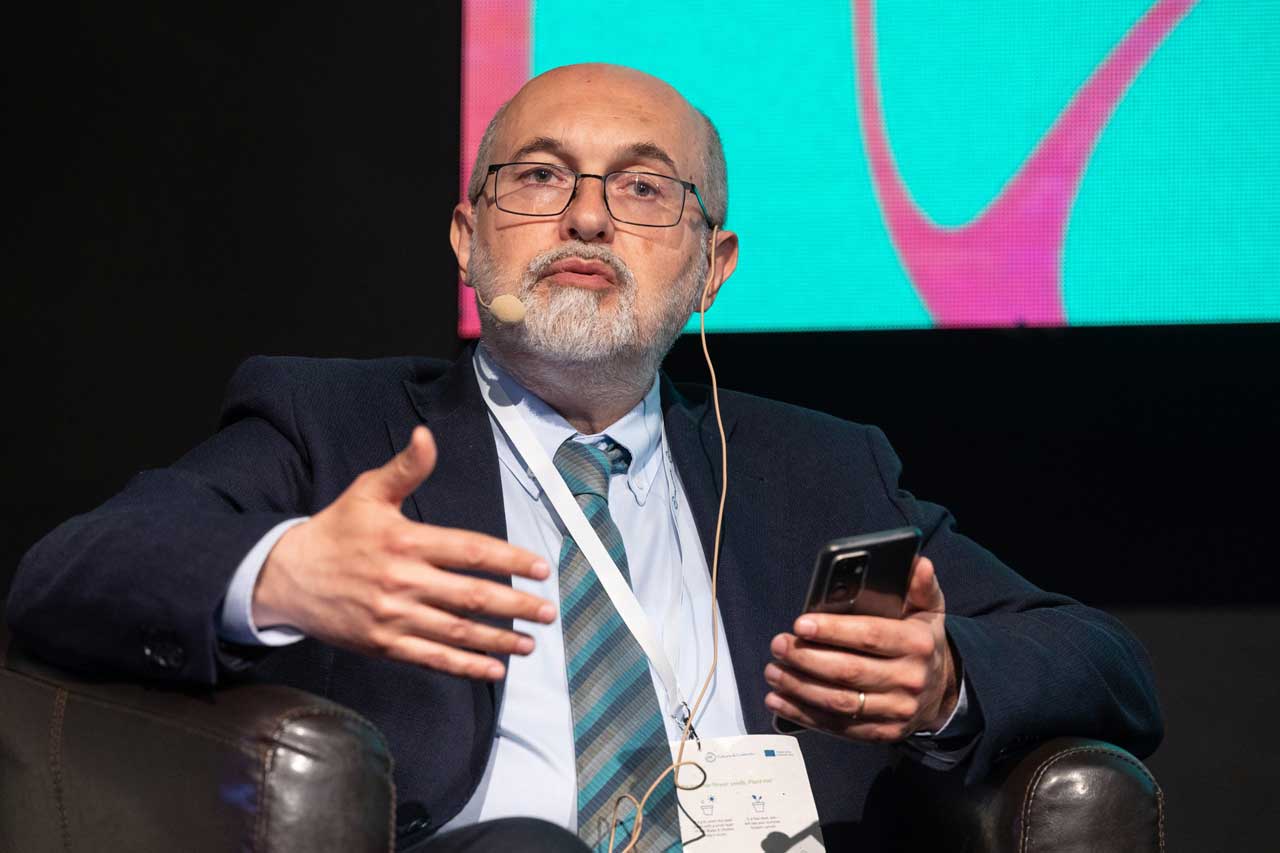

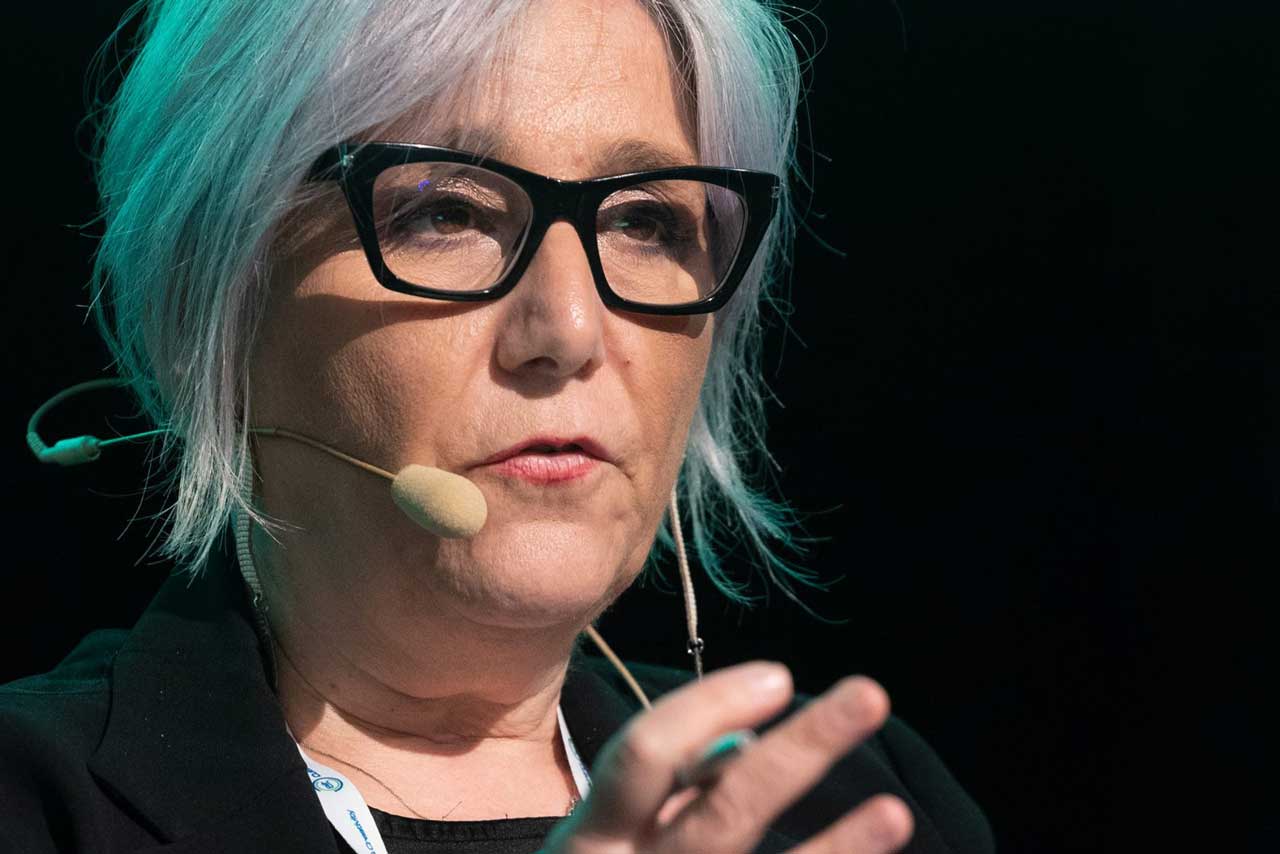

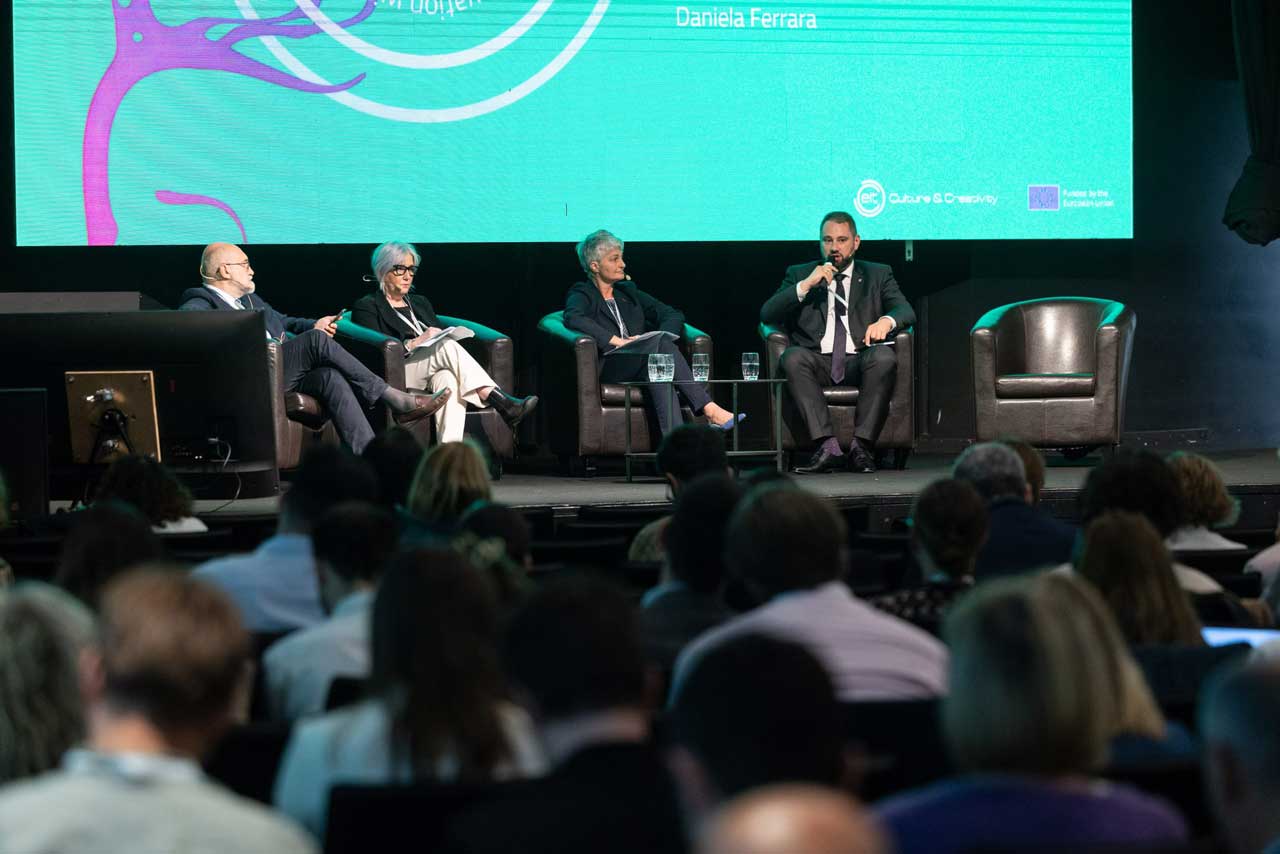
Piece written by Pier Luigi Sacco, Director of EIT Culture & Creativity Action Programme 10: Policy Optimiser, 27 June 2023.




This is the fourth of a series of six posts reporting and reflecting on the EIT Culture & Creativity Moonshot Event held in Brussels on 30 May 2023.
Other posts:
You may see the full recordings of the event and gallery of pictures here: https://eit-culture-creativity.eu/eit-culture-creativity-moonshot-event/
Watch the session on youtube: 0:16:27 – 1:11:00
Factsheets with detailed information about EIT Culture & Creativity, Membership schemes, Governance structure, Investment Club and Policy Club are available for downloading: https://eit-culture-creativity.eu/factsheets/
We wholeheartedly thank our collaborators:
Blanche Ellis (Blancheillustrates.com) for the graphic recording. Alexis Haulot for the pictures. QED team for the audiovisual support. Lukas Belting for the animations. AC Coppens for the hosting and moderation.